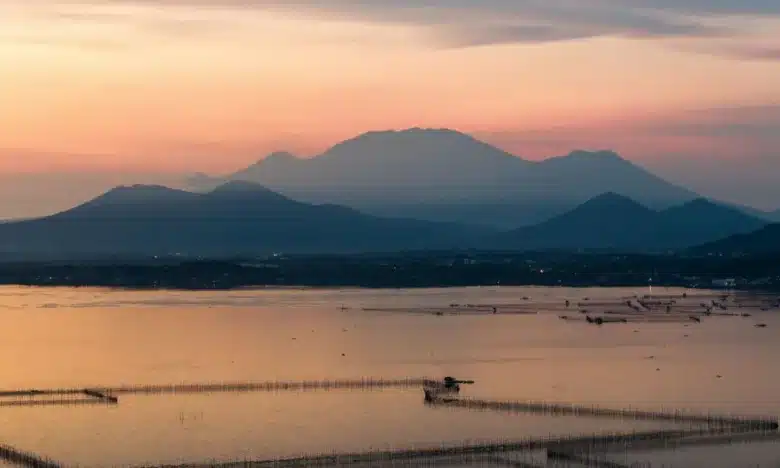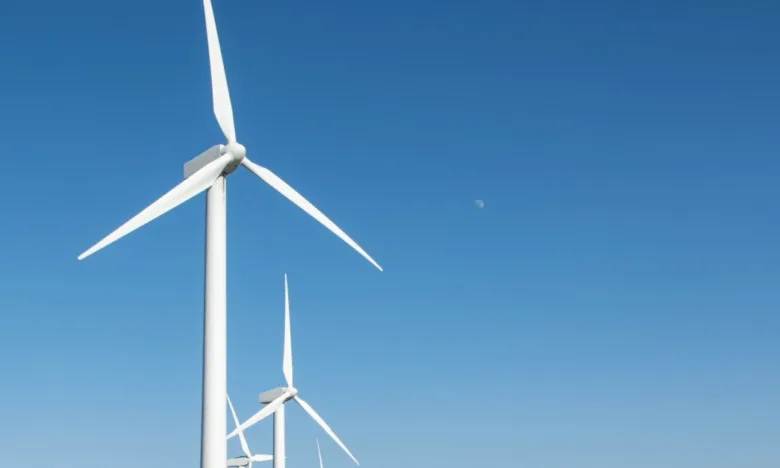
How Effective Are Electric Cooperatives?
- March 19, 2025
Electric cooperatives in the Philippines were established to expand rural electrification and drive economic growth. Laws enacted in 1960, 1969, and 1973 created and strengthened the National Electrification Administration (NEA), centralizing efforts to regulate and support these cooperatives.
However, growing concerns over inefficiencies have led to customer complaints and legal disputes, such as the ILECO vs. MORE Electric case. Critics, including Minimal Government Thinkers President Bienvenido Oplas, argue that NEA relies heavily on taxpayer subsidies while producing substandard work.
As debates over the effectiveness of electric cooperatives persist, it’s important to examine their challenges and impact on consumers.
(Also read: Electric Cooperatives vs. Private Utilities: Who Really Wins?)
Batangas Electric Cooperative, Inc. (Batelec)
Parts of Batangas are served by two electric cooperatives: BATELEC I and BATELEC II. BATELEC I serves the western part of the province, including Calaca, Calatagan, Lian, Nasugbu, and Taal, while BATELEC II covers Lipa City, Tanauan City, and 15 municipalities.
Issues: Frequent blackouts are regularly reported on BATELEC’s Facebook pages, reflecting ongoing service issues. In his article, Oplas compared Meralco’s System Average Interruption Duration Index (SAIDI) with BATELEC’s performance. For scheduled maintenance, Meralco reported 51 minutes, far lower than BATELEC I’s 257 minutes and BATELEC II’s 1,386 minutes. In unplanned outages, Meralco recorded 26 minutes, while BATELEC I and II reported 2,676 minutes (nearly two days) and 1,819 minutes, respectively.
Resolution: The Batangas chapter of the League of Municipalities of the Philippines (LMP) endorsed a joint venture between Meralco and BATELEC I to improve power stability. With 72% of residents supporting better services and fewer outages, mayors urged BATELEC I’s leadership to pursue the partnership while ensuring job security for workers. Meralco welcomed the initiative, stating it would provide financial investment and technical expertise to enhance electricity services in the area.
Cebu Electric Cooperative (CEBECO)
CEBECO operates through three divisions, each serving different areas in Cebu province. CEBECO I covers Carcar City and 17 municipalities in southern Cebu, including Dalaguete, Oslob, Moalboal, and Barili. CEBECO II serves Danao City, Bogo City, and 11 surrounding municipalities. CEBECO III, based in Toledo City, provides electricity to various towns in western Cebu.
Issues: The Cebu Electricity Rights Advocates (CERA) recently complained about frequent blackouts in CEBECO-served areas that disrupt businesses and deter investors. While private utilities like Visayan Electric have a 5.5% system loss cap, electric cooperatives such as CEBECO are allowed up to 12%. Additionally, the inefficiency of CEBECO’s contractor, PowerSource Philippines, Inc. (PSPI), led to Malapascua’s unstable power supply, despite its status as a prime tourist destination.
Resolution: In 2024, the Capitol intervened in Malapascua’s power crisis by renting generator sets to meet the island’s 2-MW demand. Governor Gwendolyn Garcia met with energy officials after PSPI’s generator failures and overloaded transformers led to prolonged outages. Garcia rejected PSPI’s continued partnership, and the Cebu government invested P50 million to take over power generation, now planning to introduce electricity fees.
Iloilo Electric Cooperative (ILECO)
The Iloilo Electric Cooperatives (ILECO) consist of three entities serving different areas of Iloilo Province, Philippines. ILECO I, established in 1970, covers 15 municipalities, while ILECO II, founded in 1975, serves Janiuay, Passi, Calinog, and Pototan. ILECO III provides electricity to areas like Barotac Viejo and San Rafael.
Issue: In May 2020, the Iloilo Provincial Board urged ILECOs I, II, and III to explain significant increases in electric bills, citing inconsistent and questionable meter readings. Additionally, in April 2024, ILECO II acknowledged a spike in billings due to increased market power rates and delays in meter readings, leading to billing cycles extending up to 34 days.
Resolution: In response to these concerns, the Philippine Congress enacted Republic Act No. 11918, expanding private utility MORE Power’s franchise to include 15 municipalities and the component city of Passi, areas previously under the jurisdiction of ILECOs I and III. ILECOs challenged this, but in July 2024, the Supreme Court upheld the law, ruling that exclusive franchises are unconstitutional and competition benefits consumers.
Northern Davao Electric Cooperative (NORDECO)
NORDECO was established in 1971. It serves 16 municipalities and two cities across the provinces of Davao de Oro and Davao del Norte, including the Island Garden City of Samal.
Issues: Consumers have criticized NORDECO for its poor service quality, frequent outages, and high electricity rates. In December 2024, its residential rate was P12.8781 per kilowatt-hour (kWh), higher than neighboring providers like Davao Light, which charged P9.2058 per kWh. Samal Island Mayor David Uy reported that NORDECO’s unreliable service caused P120 to 150 million in local government losses.
Resolution: Last February, the Senate passed Senate Bill 2888 on its third and final reading, permitting Davao Light and Power Company Inc. (Davao Light) to extend its service to seven additional locations in Davao del Norte and Davao de Oro. Meanwhile, NORDECO officials urged President Marcos to veto the bills permitting Davao Light’s takeover.
Siargao Electric Cooperative, Inc. (SIARELCO)
Established in 1979, Siarelco serves nine municipalities across 132 barangays on Siargao Island.
Issue: In December 2024, Siargao suffered a 13-day island-wide blackout due to a fault in a submarine cable, disrupting Siarelco’s power supply. The outage severely impacted businesses, tourism, and daily life, with water shortages, soaring fuel costs, and lost revenues. Many establishments closed, while residents faced rising prices for essentials like ice and water. SIARELCO worked to resolve the crisis as the Surigao del Norte Provincial Board declared a state of calamity on December 10.
Resolution: Though the cable has been repaired, a quick look at SIARELCO’s page shows that as of March 15, six unscheduled power interruptions have occurred this month. Several Facebook users have expressed disappointment, including one who said, “This is what the co-op shareholders voted for…The rest of residents and tourists who don’t get to vote are held captive by their incompetence and failures.” Another said, “Script n’yo paulit-ulit! Gabayad mig tarung pero inyo service walay ayo! (You always have the same excuses! We pay properly, but your service is terrible!)”
Evaluating electric cooperatives
The Institute of Contemporary Economics states that electric cooperatives make up 122 of the 152 power distributors in the Philippines, serving 11.4 million customers. However, they frequently face challenges related to funding and technical capacity.
The organization further reports that while electric cooperatives play a key role in providing power to remote areas, their model may no longer be suitable for developed regions requiring more advanced energy systems. Although they have been instrumental in rural electrification, modern distribution demands financial strength, technological advancements, and scalability—challenges that many cooperatives struggle to overcome on their own.
Meanwhile, Oplas argues that the NEA is one of the “more wasteful agencies in the government”. In 2020 alone, it received P12.9 billion, with annual allocations of P2 to P3 billion from 2021 to 2025—amounts exceeding the budgets of the Department of Energy and Energy Regulatory Commission. He said that from 2022 to 2024, 27 to 35 electric cooperatives annually consumed over P1 billion in loans, raising concerns over inefficiency and financial mismanagement.
Experts propose that forming strategic partnerships could strengthen financial stability, drive technological progress, and improve service quality, allowing ECs to better serve expanding communities.
Energy professional Arnel Casanova echoed this, emphasizing that partnerships between private distribution utilities and electric cooperatives can boost efficiency by leveraging economies of scale. Joint ventures, shared infrastructure, and bulk purchasing can enhance service quality.
He also highlights the need for supportive policies, including incentives for shared infrastructure, streamlined approvals, and fair tariff structures, to encourage collaboration and improve overall power distribution.
Sources:
https://en.wikipedia.org/wiki/National_Electrification_Administration
https://www.bworldonline.com/opinion/2024/10/15/627662/nea-batelec-nordeco-and-other-electric-cooperatives/
https://www.facebook.com/consumerwelfaredesk
https://www.bworldonline.com/opinion/2025/02/18/653701/pdus-vs-ecs/
https://cebuspotlight.com/cera-calls-for-system-loss-policy-reassessment/
https://www.cebu.gov.ph/sugbonews/story.php?id=680
https://www.sunstar.com.ph/cebu/capitol-to-rent-generators-to-address-ongoing-power-outage-on-malapascua-island
https://www.philstar.com/the-freeman/cebu-news/2025/02/02/2418652/capitol-plans-power-charges-malapascua-residents
https://www.pna.gov.ph/articles/1243573
https://www.sunstar.com.ph/davao/nordeco-appeals-to-pbbm-prevent-passage-of-bill
https://www.abs-cbn.com/news/regions/2024/12/14/outage-hit-siargao-island-gets-limited-access-to-electricity-1016
https://balitang-mindanao.info/energy-calamity-in-siargao-and-bucas-grande-surigao-del-norte-province/
https://www.gmanetwork.com/regionaltv/news/105520/water-woes-in-siargao-island-following-power-outage/story/
https://newsinfo.inquirer.net/2014474/surigao-norte-declares-state-of-calamity-over-siargao-power-crisis
https://www.manilatimes.net/2025/02/18/opinion/columns/for-public-utilities-big-is-best-for-consumers/2056933
https://www.facebook.com/permalink.php?story_fbid=pfbid0L2Rzij4yemsL6HmJFFVDtkQtMjwSWJ7HQsiWf1qnnzi1QHoRH64F42vaYCsrYJvfl&id=61563789051896
https://dailyguardian.com.ph/panay-power-grid-at-risk-due-to-underinvestment-by-electric-coopsys



